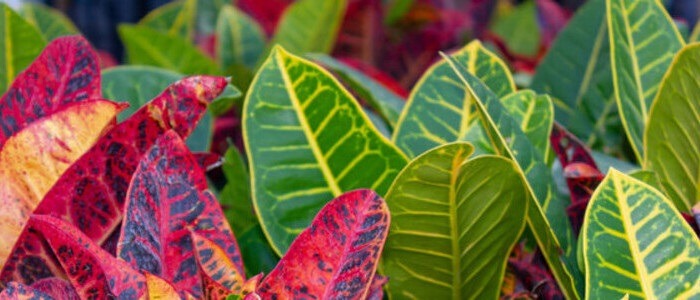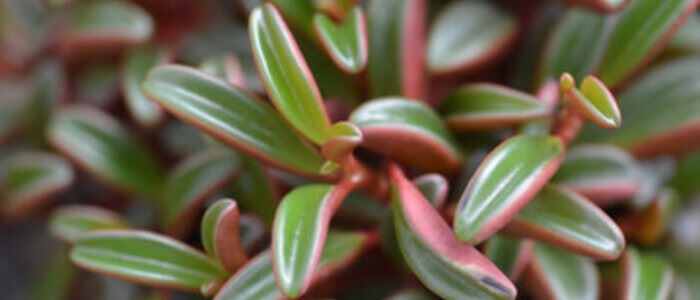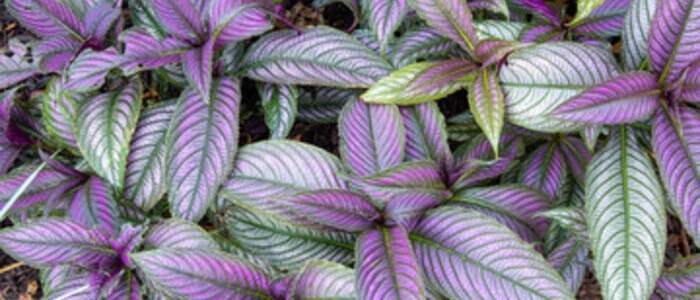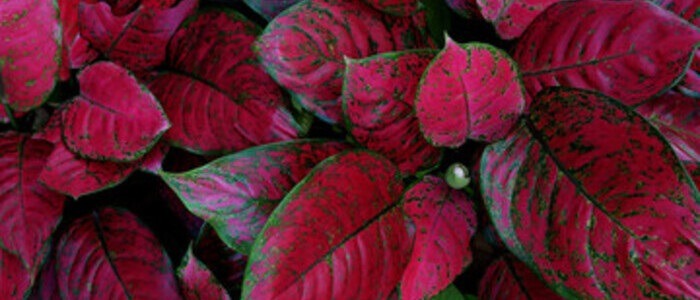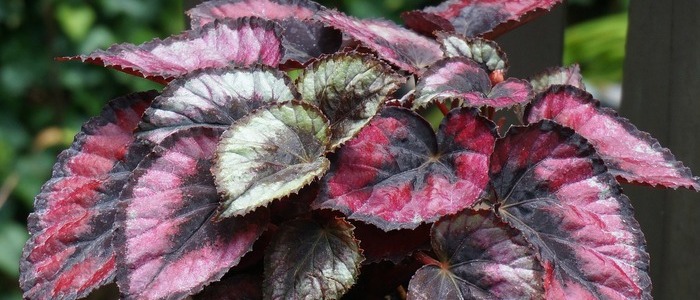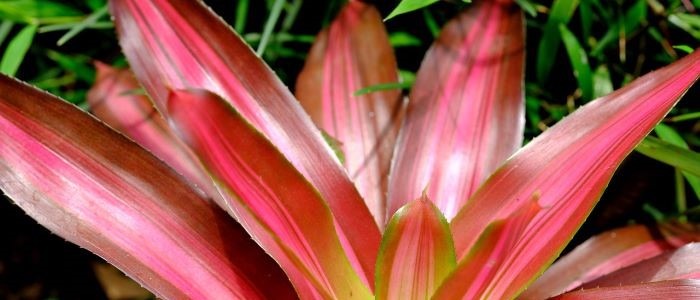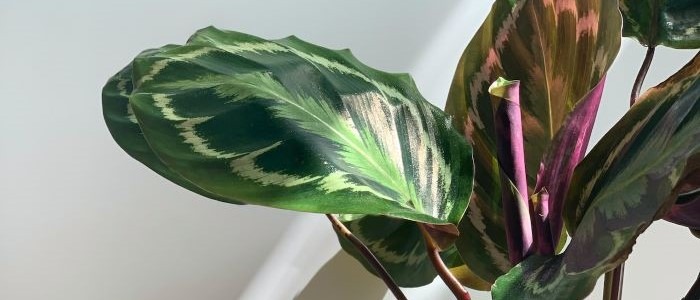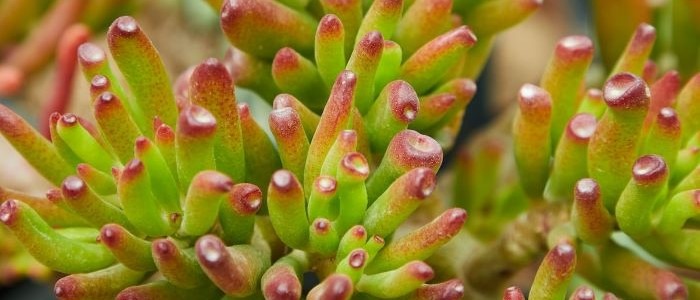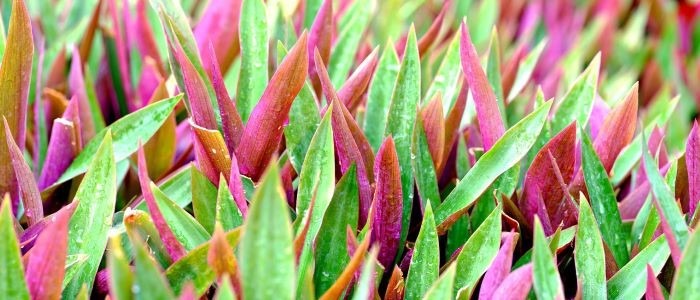Acalypha Wilkesiana, commonly known as Jacob’s coat, is a species of flowering plant in the family Euphorbiaceae. It is native to India, Southeast Asia, and Australia, and is an evergreen shrub that can grow up to 4 feet tall and 3 feet wide. The leaves are oval-shaped and can be either solid green or variegated with yellow, pink, bronze, or red.
The flowers are small and inconspicuous but they produce a colorful bract that can range from yellow to red. When selecting the best spot for your Acalypha Wilkesiana plant it should be placed in a bright location with indirect sunlight exposure for optimal growth. Soil type should be well-draining as too much moisture will cause root rot in the plant.
Watering needs depend on the climate you live in; if your area experiences hot summers then you should water regularly but if it’s cooler you may not need to water as often. Fertilizers should also be used depending on what your soil requires; organic fertilizers are recommended since they offer nutrients without causing any harm to the environment.
Pruning is another key component of caring for this beautiful shrub; dead or diseased branches should be removed promptly while pruning away any damaged or overgrown branches will help promote healthy growth. Lastly, since Acalypha wilkesiana can be susceptible to common insect pests such as aphids and mealybugs it’s important to monitor your plants regularly so that you can take action if any infestations occur.
Overall, Acalypha Wilkesiana is a beautiful addition to any garden with its vibrant color palette and unique shapes making it an eye-catching sight year round! With proper care, these plants will thrive in almost all climates making them an ideal choice for both novice and experienced gardeners alike.

Acalypha Wilkesiana Frequently Asked Questions
How tall does Acalypha wilkesiana grow?
Acalypha wilkesiana, also known as the Copperleaf plant or Jacob's Coat, can grow up to 6 feet in height. With proper care and favorable conditions, Acalypha wilkesiana can reach its maximum height, creating a striking focal point in outdoor spaces.
Is the Acalypha wilkesiana plant known by other names?
Yes, the Acalypha wilkesiana plant is also known as the Copperleaf or Jacob's Coat. These alternate names are derived from the vibrant coppery color of its leaves, which make it a popular choice for ornamental gardens. Additionally, its scientific name honors the American explorer and politician Charles Wilkes.
Soil Requirements and How to Care for Acalypha Wilkesiana
When selecting the best spot for your Acalypha Wilkesiana, it should be placed in a bright location with indirect sunlight exposure. The plant can handle sun and shade, but too much direct sunlight can cause it to become scorched. The optimal soil pH range for this plant is between 6 and 7, so a soil test may be necessary to determine if the soil needs adjusting.
Improving the fertility of the soil is also important for healthy growth. Adding organic matter such as compost or aged manure will help to improve nutrient levels in the soil while also increasing its water retention capacity. If drainage is an issue, consider adding sand or gravel to increase aeration and prevent standing water from pooling around the roots.
Maintaining adequate moisture levels in the soil is also essential for healthy growth. Mulching around the plant helps to conserve moisture and reduce evaporation from the soil surface. While over-watering should be avoided, occasional misting of leaves during dry periods may be beneficial for keeping them hydrated and preventing leaf burn or tip burn due to dry air conditions.
By following these tips on selecting and preparing a suitable location for your Acalypha Wilkesiana (Jacob’s coat), you can ensure that your plant will thrive in its new home!
Watering and Fertilizing Requirements for Acalypha Wilkesiana
Caring for Acalypha Wilkesiana, or Jacob’s coat, is easy and rewarding. To ensure this evergreen shrub remains in pristine condition, there are a few requirements to keep in mind when it comes to watering and fertilizing. This plant thrives best with slightly moist soil so it should be given a light and even watering throughout the year. This can be done by using a garden hose or sprinkler system or adding mulch around the base of the plant to lock in moisture.
Additionally, applying a balanced fertilizer once a month during active growth periods like spring and summer is recommended but take care not to over-fertilize as this can lead to yellowing leaves and stunted growth. It is also important to monitor the pH level of your soil as acalypha Wilkesiana prefers acidic levels between 6 and 7. Furthermore, prune away any damaged or overgrown branches regularly while misting your leaves occasionally during dry periods will help hydrate them further.
By following these simple steps you will have an impressive Acalypha Wilkesiana that enlivens any garden! Do keep an eye out for signs of insect infestations or disease too just as you would with any other plant species for optimum results. With proper care and attention, you can enjoy lush greens all year round!
How to Propagate Acalypha Wilkesiana or Jacob’s Coat Plant
Propagating Acalypha Wilkesiana, or Jacob’s coat, is relatively easy and can be done using several different methods. It’s best to propagate your plant in early spring or late summer when the plant is most active and vigorous.
The three main methods of propagation are stem cuttings, air layering, and division. For stem cuttings, use a sharp pair of scissors or pruning shears to take 4-5 inch cuttings from the plant’s growing tips. Select healthy stems that are free from disease or pests and ensure that each cutting has two sets of leaves on it. Place the cuttings in a pot filled with moist soil mixed with rooting hormone for optimal results.
Air layering is done by wounding a branch near its base then wrapping it with moist sphagnum moss before covering it tightly with plastic wrap to keep it warm and moist until roots form. Finally, division entails splitting an established plant into several parts by using a shovel or other tool and replanting each part separately in soil that has been amended with compost or peat moss.
Regardless of which method you choose, it is important to keep the soil around your Jacob’s coat plant consistently moist while also providing indirect light for your new plants to thrive. With proper care and attention, you will soon have healthy Acalypha Wilkesiana plants thriving in your garden!
Pruning and Pruning Requirements for Acalypha Wilkesiana
Pruning and pruning requirements for Acalypha Wilkesiana are important for keeping your Jacob’s coat plant healthy and looking its best. Pruning can be done throughout the year, but should only be undertaken when necessary. During the spring and summer months when the plant is actively growing, it is best to remove any dead or diseased branches as soon as they appear. This will help prevent any spread of disease and keep your shrub looking vibrant.
In addition to removing dead or diseased branches, pruning can also be done to maintain a desired shape or size of the plant. When doing this, take care not to over-prune as this can cause dieback in the plant. It’s best to use sharp shears so that you don’t damage its delicate leaves and stems.
It’s important to remember that Acalypha Wilkesiana does not require frequent pruning and should only be done if needed. If you want to encourage more vigorous growth then lightly trimming back new shoots will promote bushiness in the plant as well as provide protection from wind damage. Properly maintaining your Jacob’s coat through regular pruning will ensure that it remains healthy and beautiful for many years to come!
Common Problems Found When Growing Acalypha Wilkesiana
Caring for Acalypha Wilkesiana, also known as Jacob’s coat, can be a rewarding but challenging task. Common care problems can arise due to inadequate light, poor soil conditions, and improper humidity levels. Here are some of the most common care issues and solutions that can help ensure your Jacob’s coat plant stays healthy and thriving.
Mealybugs are small pests that feed on the sap of plants. To identify them, look for cottony white patches on leaves or stems. To get rid of mealybugs, use rubbing alcohol to wipe them away from the affected area.
Root rot is another common issue with Acalypha Wilkesiana caused by overwatering or poorly draining soil. If you notice brown spots on the leaves or yellowing foliage then this is likely an indication of root rot in which case you need to repot the plant into fresh soil with improved drainage as soon as possible.
If your Jacob’s coat is not getting enough light it will become leggy and weak which could lead to it becoming stunted in growth and lacking in vigor. Move the plant to a brighter location such as near a window if possible and gently rotate it every couple of days so all parts receive direct sunlight exposure at some point during the day (but not for too long).
Acalypha Wilkesiana requires slightly acidic soil with a pH range between 5-6.5 so if you find that your plant’s leaves are turning yellow then this could be an indication of incorrect nutrient levels in its environment. Adjusting nitrogen levels in the soil should help restore balance but do not over-fertilize as this could damage roots and discourage flowering later on down the line.
Low humidity levels can cause brown tips on leaves so make sure to keep humidifiers nearby or mist regularly during dry periods when necessary – especially during winter months when heating systems can further reduce moisture levels indoors!
.
Conclusion
Acalypha wilkesiana, also known as Jacob’s coat, is a beautiful evergreen shrub that can be an attractive addition to any garden. With the right care and attention, it can thrive in almost all climates and adds a unique splash of color to its environment. This article has provided readers with comprehensive information on how to select the best location for the plant, soil requirements, watering and fertilizing needs, how to propagate and prune it properly, and common care problems and solutions.
To keep your Jacob’s coat plant healthy and thriving, it is important to take into account all of these factors. It is also essential to monitor your plants regularly to ensure that they are not being affected by insects or diseases. Taking proactive steps will ensure that your Acalypha wilkesiana looks beautiful for years to come! So go ahead – get out there and start gardening!
Other Multicolored House Plants

